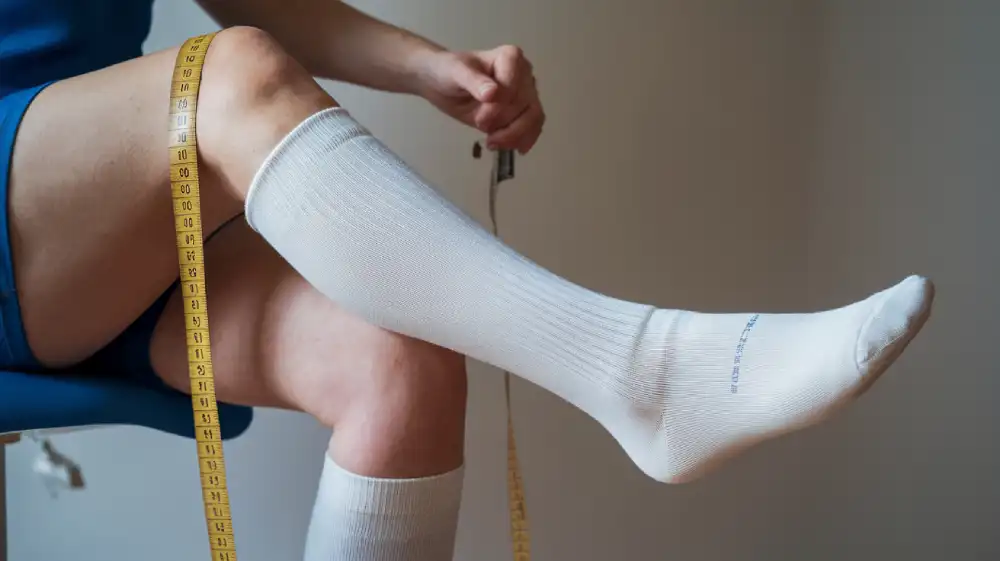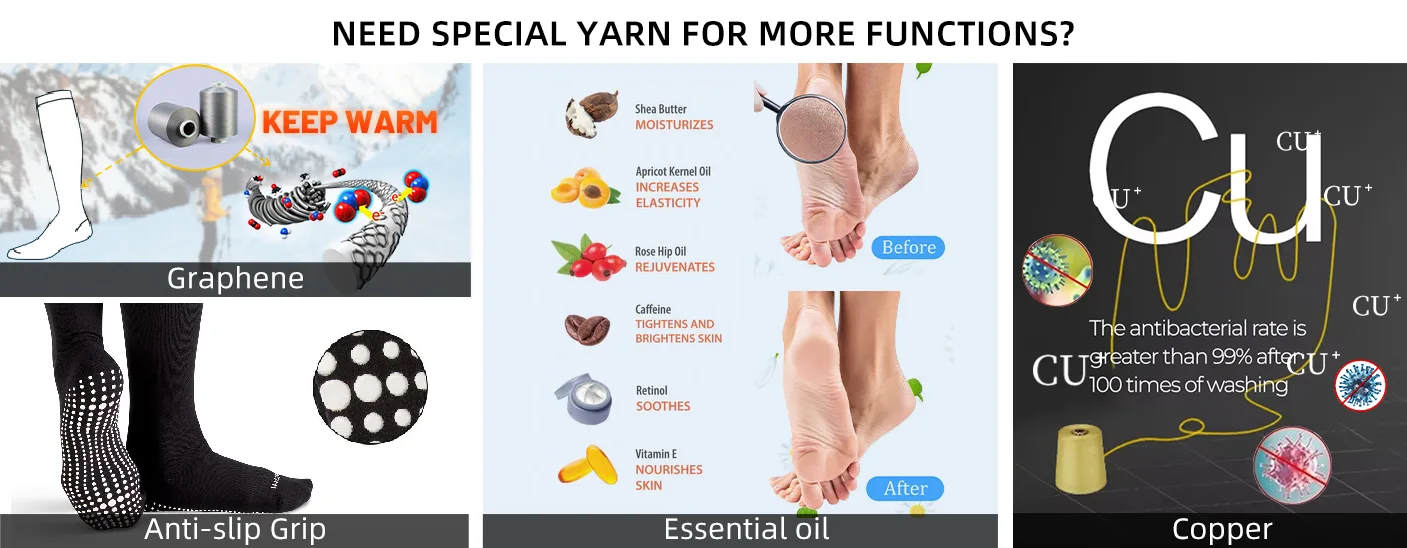Quick Answer: How to Pick Compression Socks
Choose compression socks by:
(1) purpose (travel, swelling, sports);
(2) level—start with 15–20 mmHg for daily/travel, 20–30 mmHg for swelling/varicose or post-exercise;
(3) length—knee-high fits most;
(4) fit—measure ankle & calf, no wrinkles;
(5) material—nylon/spandex for wicking.
Avoid use with arterial disease unless advised.
Introduction: Why Choosing the Right Compression Sock Matters
Compression socks aren’t just a piece of fabric—they’re a science-driven tool for better circulation, recovery, and comfort. Whether your audience is athletes, healthcare professionals, or frequent travelers, knowing how to choose the right compression socks means understanding who they’re for, why they need them, and how to match compression level, fit, and material.
This in-depth guide will walk you through the five essential steps to select compression socks that truly perform.
Step 1: Understand the Real Needs Behind Compression Socks

Every customer has a different story—and that story determines which sock works best.
An athlete may need firm, graduated compression (20–30 mmHg) for faster recovery.
A nurse standing 12 hours a day might want mild compression (15–20 mmHg) to reduce swelling without discomfort.
A traveler sitting through long flights benefits from socks that maintain blood flow and prevent edema.
Think of compression socks not as one product, but as multiple solutions under one category.
Understanding the underlying motivation—pain relief, circulation, recovery, prevention—should always be your first step.
Step 2: Learn the Different Types and Levels of Compression Socks
Compression socks come in two main categories:
- Graduated compression socks: tighter at the ankle, looser at the calf. Ideal for everyday use, travel, or sports.
- Anti-embolism (TED) socks: designed for postoperative or immobile patients, offering clinical-grade pressure distribution.
Compression Levels Explained

If you’re unsure where to start, 15–20 mmHg is the universal baseline—comfortable enough for daily wear, strong enough to improve circulation.
Step 3: Material Matters More Than You Think

Material defines not just how a compression sock feels, but how long it performs.
- Nylon/Spandex blends are the gold standard: durable, stretchable, and moisture-wicking.
- Cotton adds softness but retains moisture; good for light use, not for high-intensity or long wear.
- Polyester offers flexibility and fast drying.
- Copper-infused fibers add antimicrobial protection and odor control.
- Eco-friendly fibers (recycled nylon, organic cotton) appeal to sustainability-minded consumers.
A runner sweating through long miles will prefer a nylon-spandex mix, while a hospital buyer may choose a breathable, antimicrobial blend to reduce infection risk.
For a modern audience, performance + sustainability sells better than either alone.
Step 4: Get the Fit Right—Because Compression Only Works If It Fits
Fit is where most customers fail.
Compression socks that are too tight restrict circulation; too loose, and they’re just fancy sleeves.
Here’s the correct measuring process:
- Measure ankle circumference at the narrowest point.
- Measure calf circumference at the widest part.
- If thigh-high, measure thigh circumference as well.
- Record leg length (floor to knee or thigh).
Use brand-specific size charts—variations of just 1 cm can alter compression significantly.
Encourage customers to check fit after wearing for 15 minutes: the sock should feel snug but not painful, leaving no marks or color change.
The right size transforms the user experience from “tight and tiring” to “light and supportive.”
Step 5: Evaluate Quality and Long-Term Performance

Not all compression socks are created equal.
High-quality pairs show consistent elasticity even after dozens of washes, keep pressure distribution stable, and use reinforced stitching to prevent sagging.
Checklist for assessing quality:
- Even, firm elasticity without rigid spots
- Smooth interior seams
- Breathable zones at the instep and calf
- Retains shape after 20+ washes
- Proven compression rating (tested to medical standard EN ISO 13485)
- Also consider brand reliability. A factory or manufacturer that provides pressure testing certificates or OEKO-TEX material reports signals genuine quality.
Matching Socks to Real-World Applications
Now that you know the technical side, apply it to real users.
For Athletes
Choose 20–30 mmHg graduated socks for better venous return and muscle recovery. They reduce post-exercise soreness and keep legs energized.
For Healthcare Workers
Look for 15–20 mmHg breathable nylon knee-highs with reinforced heel zones. They prevent fatigue and swelling during long shifts.
For Travelers
Compression during flights prevents DVT (deep vein thrombosis). The best travel socks are moderate (15–20 mmHg), easy to pull on, and moisture-wicking for long wear.
For Swelling or Varicose Veins
A firmer 20–30 mmHg graduated sock improves circulation and relieves discomfort. For severe edema or medical recovery, consult a professional.
For Elderly or Post-Surgery Users
Prioritize ease of donning—look for “easy-on” designs, soft cuffs, and open-toe options.
Avoid overly tight bands that may restrict blood flow.
Care, Longevity, and Safety
Compression socks are medical-performance garments and must be cared for accordingly.
Use and Care Tips:
- Put them on in the morning before swelling starts.
- Smooth wrinkles to avoid pressure points.
- Hand wash or use a gentle cycle; never tumble dry.
- Replace every 3–6 months for consistent compression.
Safety Notes
People with arterial disease, neuropathy, severe dermatitis, or heart failure should seek medical advice before use.
When in doubt, start with mild compression and increase under supervision.

Learn more customization options in our custom compression socks guide.
Partnering with the Right Manufacturer for Compression Socks
Choosing the right compression socks is both art and science:
Understanding user intent, matching compression levels, selecting breathable materials, and ensuring precise sizing together create socks that actually work.
For businesses, offering truly effective compression products isn’t just meeting a need—it’s creating long-term trust. If you’re ready to elevate your line with scientifically designed, customizable compression socks, contact our team to explore materials, prototypes, and OEM support today.
FAQs
How do you pick out compression socks?
Match purpose, pick a level (15–20 mmHg daily/travel; 20–30 mmHg for swelling/varicose), choose knee-high by default, measure ankle/calf for a wrinkle-free fit, and prefer breathable nylon/spandex unless advised otherwise.
What compression level is best: 15–20 vs 20–30 mmHg?
15–20 mmHg suits daily use, flights, and long standing. 20–30 mmHg provides firmer support for swelling, varicose veins, or post-exercise recovery; consult a clinician if you have arterial disease or neuropathy.
What are the best compression socks for travel?
Look for graduated 15–20 mmHg knee-high socks with moisture-wicking nylon/spandex and a wide cuff to prevent slippage during long flights.
What are the best compression socks for nurses?
Graduated 15–20 mmHg knee-high or crew-length with breathable mesh panels and reinforced heel/toe for all-day comfort.
Can I request custom compression socks in different materials?
Yes, we can offer different materials for custom socks, including nylon, spandex, and eco-friendly options. You can choose based on your customers’ preferences and your brand’s sustainability goals.
